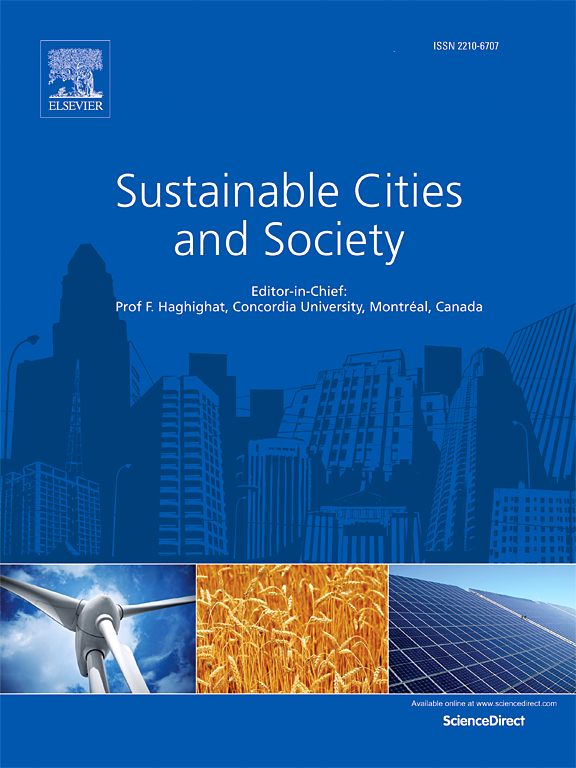Revealing multiscale and nonlinear effects of urban green spaces on heat islands in high-density cities: Insights from MSPA and machine learning
IF 10.5
1区 工程技术
Q1 CONSTRUCTION & BUILDING TECHNOLOGY
引用次数: 0
Abstract
Urban heat islands (UHI), intensified by global warming and urbanization, threaten urban sustainability and public health. This study examines the spatiotemporal dynamics of urban green spaces (UGS) in Shanghai (2000–2020), focusing on spatial scale effects, morphological patterns, and nonlinear relationships. Using Morphological Spatial Pattern Analysis (MSPA), Pearson correlation, and random forest models, the study explores UGS-UHI interactions. The results reveal a 49.6 % reduction in UGS area (from 2808.48 km2 to 1414.72 km2), accompanied by fragmentation of Core and Bridge patterns, and a rise in land surface temperature (LST) from 42.91 °C to 45.22 °C. Core areas decreased by 48.8 % during 2000–2011 but rebounded to 30 % of total UGS by 2020. Bridge areas, vital for connectivity, dropped sharply from 25 % in 2011 to 9 % in 2020. At the 300-meter scale, UGS showed strong linear cooling effects, while at the 1200-meter scale, nonlinear relationships emerged, with Core areas ≥0.5 km2 significantly reducing UHI. Fragmented patterns like Islet (rising from 10 % to 23 % during 2005–2011) intensified UHI, while Loop and Bridge patterns mitigated heat by enhancing connectivity. This study advances understanding of UGS-UHI dynamics, emphasizing scale-dependent and morphological thresholds. The findings provide actionable insights for climate-resilient urban planning, supporting SDG 11 and SDG 13.
求助全文
约1分钟内获得全文
求助全文
来源期刊

Sustainable Cities and Society
Social Sciences-Geography, Planning and Development
CiteScore
22.00
自引率
13.70%
发文量
810
审稿时长
27 days
期刊介绍:
Sustainable Cities and Society (SCS) is an international journal that focuses on fundamental and applied research to promote environmentally sustainable and socially resilient cities. The journal welcomes cross-cutting, multi-disciplinary research in various areas, including:
1. Smart cities and resilient environments;
2. Alternative/clean energy sources, energy distribution, distributed energy generation, and energy demand reduction/management;
3. Monitoring and improving air quality in built environment and cities (e.g., healthy built environment and air quality management);
4. Energy efficient, low/zero carbon, and green buildings/communities;
5. Climate change mitigation and adaptation in urban environments;
6. Green infrastructure and BMPs;
7. Environmental Footprint accounting and management;
8. Urban agriculture and forestry;
9. ICT, smart grid and intelligent infrastructure;
10. Urban design/planning, regulations, legislation, certification, economics, and policy;
11. Social aspects, impacts and resiliency of cities;
12. Behavior monitoring, analysis and change within urban communities;
13. Health monitoring and improvement;
14. Nexus issues related to sustainable cities and societies;
15. Smart city governance;
16. Decision Support Systems for trade-off and uncertainty analysis for improved management of cities and society;
17. Big data, machine learning, and artificial intelligence applications and case studies;
18. Critical infrastructure protection, including security, privacy, forensics, and reliability issues of cyber-physical systems.
19. Water footprint reduction and urban water distribution, harvesting, treatment, reuse and management;
20. Waste reduction and recycling;
21. Wastewater collection, treatment and recycling;
22. Smart, clean and healthy transportation systems and infrastructure;
 求助内容:
求助内容: 应助结果提醒方式:
应助结果提醒方式:


